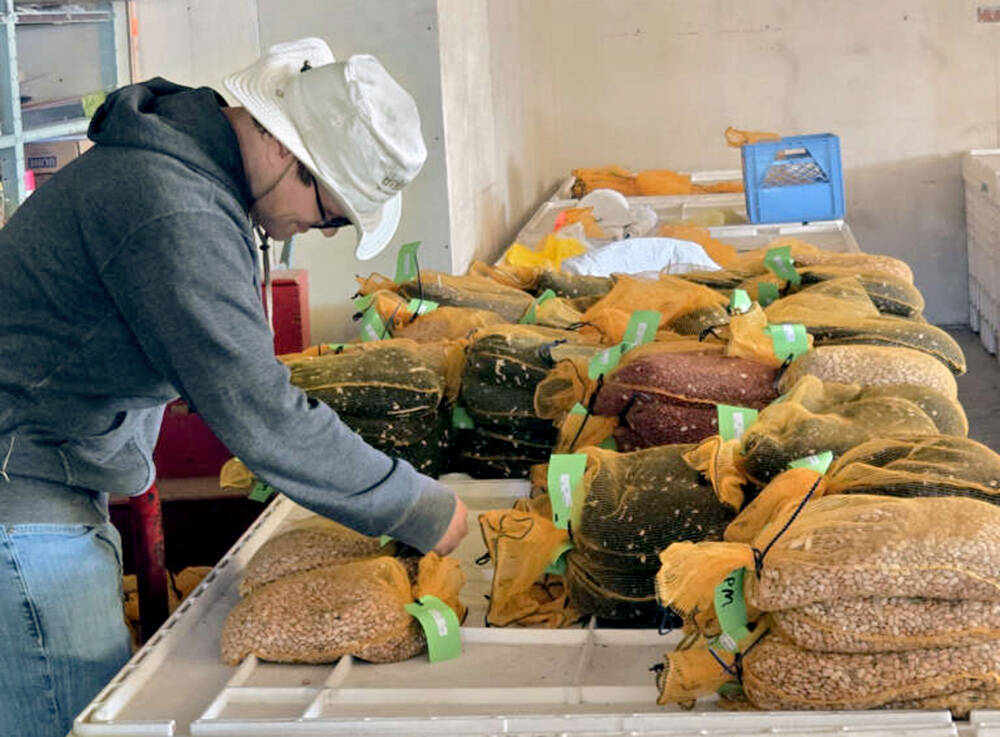As the cash price on soybeans holds just under $20 per bushel, growers want to know how to push yields higher.
That was the message they wanted to hear as the Ontario Agricultural Conference began Jan.4. The event began with “Sizzlin’ Soybeans!” with Horst Bohner, soybean specialist with the Ontario Ministry of Agriculture, Food and Rural Affairs, and Dr. Mike Staton from Michigan State University.
According to Staton, growers in the U.S. have seen higher yields by pushing later-maturing varieties, noting none of the record-breaking yields of the past few years have come from short-day lines.
Read Also

Bean research breeds community giving
University of Guelph dry bean researcher Dr. Mohsen Yoosefzadeh Najafabadi champions sustainability by donating surplus breeding program beans to support food security and community art initiatives.
Why it matters: Getting greater yields on soybeans needs an all-systems approach, according to research.
“Growers believe they have to push maturity to get yield,” said Staton, who also acknowledged the risks, including delayed winter wheat planting. “There is some risk with pushing your maturity — freeze damage, harvest delays, compaction, harvest ruts and early snow cover. But we have to look at it as a systems approach.”
Staton has worked to determine the effect of maturity group (MG) and planting date. At one site, a 1.7 to 2.9 MG and an average planting date of May 23 saw little effect, with yields ranging from 64.7 to 64.9 bu./ac. When researchers moved to a 2.2 to 3.2 MG, the earliest planting date of May 17 had the highest yields with 75 to 79.8 bu./ac.
Yet in Michigan State University variety performance trials from 2007 to 2022, the effect of early- and late- maturing varieties on yield was only 0.2 bu./ac in higher yielding varieties and 0.5 on average yielding lines.
One question on planting date is whether to plant soybeans ahead of corn. Staton said planting ultra-early varieties in the first week of April carries considerable risk, particularly from frost damage and seed corn maggot. In some of his plots, he saw an 8.9 bu./ac advantage in soybeans planted before April 20, with one outlier at 6.5 on poorly drained soil.
As for Ontario conditions, Bohner noted he’s been asked many times whether it’s better to plant soybeans ahead of corn. Studies are underway through the University of Guelph, with 12 corn hybrids and 10 soybean varieties planted the same day at three locations. The goal is to determine if the two crops behave in a similar fashion.
“We know that late planting is bad news and that April is good and early May is OK, but you start to lose some yield,” said Bohner. “Or is there something about soybeans being more responsive to early planting?”
Based on select results from Dave Hooker of the University of Guelph, Bohner said there was no significant gain from planting soybeans first (see table below). It’s not a bad strategy, he added, but not a game changer.

On the topic of spoon-feeding soybeans, Staton referred to it as “fringe fertility”, with research that showed little benefit from starter fertilizers. With starters, his work reflected increased yields in only two of 11 on-farm trials, while foliar fertilizers showed profitability in only 15 of 156 on-farm trials conducted between 2009 and 2022.
The fundamentals still apply. Growers should soil test every three years, base their phosphorus, potassium and lime applications on those results and maintain pH between 6 and 6.5. They should also scout for manganese deficiency when plants are six inches tall and inoculate every year. It’s a 1.3 bu./ac advantage to do that, based on research from Minnesota, added Staton.













